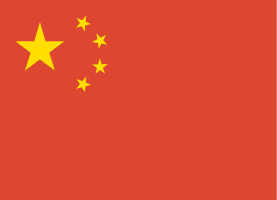When the Trump administration brandished the "global tariff stick", international logistics practitioners were astonished to find that Chinese enterprises had undergone a fundamental shift in their response stance. From the expedient measures of "detour through Vietnam and survive by tax rebates" during the trade war in 2018 to the current direct confrontation with equivalent tariffs, China's industrial chain is undergoing a silent revolution.
The United States' reliance on China's industrial chain has gone beyond simple commodity trade and shifted to a deeper level of systematic integration. The root cause lies in the unique "sticky value" of China's industrial chain. Eastern provinces such as Zhejiang and Guangdong are facing short-term pain due to their reliance on traditional manufacturing industries, but they are gradually building resilience through technological upgrading and the exploration of emerging markets. Americans would rather pay high prices for purchases than choose domestic suppliers. This "overwhelming cost-effectiveness" comes from what you could say is the fierce competition among major countries. However, behind this choice lies the fact that China's manufacturing industry, from mold development to surface treatment, from custom packaging to logistics and customs clearance, has formed an irreplaceable systematic advantage through its full-process service capabilities. The evolution of China's industrial chain has broken through the stage of simple contract manufacturing and begun to advance into the deep waters of technology. China's semiconductor industry chain is irreplaceable: China is not only the world's largest semiconductor consumer market (accounting for more than 35%), but also has complete manufacturing capabilities. It is difficult for American enterprises to bypass China's supply chain to obtain key components. The United States is unable to further enhance its manufacturing and productivity through tariff barriers, and it is almost impossible to achieve industrial self-sufficiency.
Looking back from the perspective of historical coordinates, the evolutionary trajectory of China's industrial chain is clearly visible: shifting from passive defense to proactive offense, from cost - based advantages to systemic advantages, and from rule - takers to standard - setters.
This silent revolution is reshaping the global trade map. When tariff threats encounter the "stickiness" of the industrial chain, and when trade barriers clash with systemic competitiveness, the world economy is witnessing unprecedented changes in a century.
In this war without gunpowder smoke, the confidence of Chinese enterprises has long been reflected in the brightly - lit intelligent factories in the Yangtze River Delta, engraved in the ceaselessly flowing container codes in the Guangdong - Hong Kong - Macao Greater Bay Area, and more importantly, integrated into the "Chinese gene" that is deeply ingrained and difficult to separate from the global industrial chain.
Shared Vision, United in Progress
The US side has repeatedly signaled its intention to expand the list of tariffs on Chinese goods. Even more troublesome for sellers is that some logistics channels have adopted a "supplementary collection at port" model. That is, if the tax rate is increased during customs clearance, the freight will be additionally charged according to the new tax rate, which has brought unprecedented tariff uncertainties to cross - border e - commerce.
In response to this pain point, Yida (Guangdong) launches a US - bound guaranteed - price dedicated line, reconstructing cost controllability with double guarantees.
1.Guaranteed - price service provides a safety net, with zero pass - on of tariff fluctuations
No matter how the US Customs adjusts the tax rate subsequently, all fees are based on the declared value of the goods when they are warehoused. We promise that there will be no additional charge for price differences due to tariffs, customs clearance fees, surcharges, etc. after the goods are warehoused. Compared with the "supplementary tax at port" model of similar channels in the market, we transfer the cost risk to the logistics end by reserving shipping space in advance and using a tariff estimation model, ensuring the stable profit margin of our customers.
2.Dual - mode Flexible Adaptation: Optimizing Both Timeliness and Cost
Sea DDP:
Relying on fast - shipping resources such as Matson and Zim, goods can reach the port quickly and be efficiently delivered in the last - mile. This mode is suitable for customers with large - volume shipments and relatively flexible requirements for delivery timeliness.
Air DDP:
It meets the needs of high - value goods and seasonal order surges.
Both modes support DDP (Delivered Duty Paid) with pre - paid tariffs. Moreover, they offer end - to - end visible tracking, helping you avoid additional costs caused by customs clearance delays.
In the current context of escalating uncertainties in the global supply chain, true competitiveness lies in the ability to transform risks into certainties.
Our US - bound guaranteed - price dedicated line comes with a promise of "final price upon warehousing". With this, every cent of the freight cost becomes a calculable profit, enabling you to weather the tariff storm and firmly seize the first - mover advantage in the North American market!



























